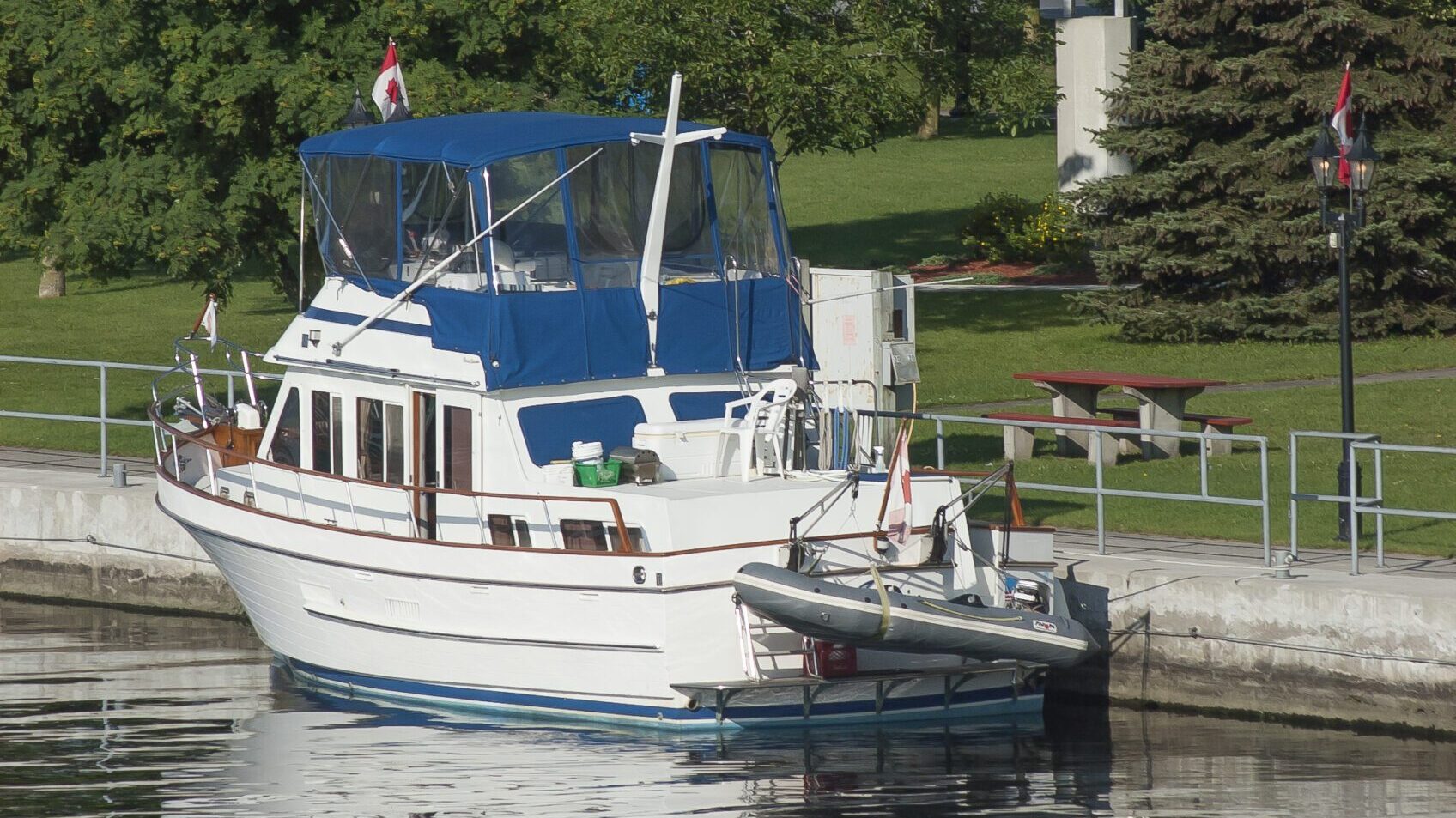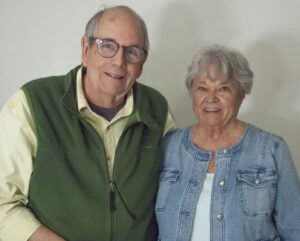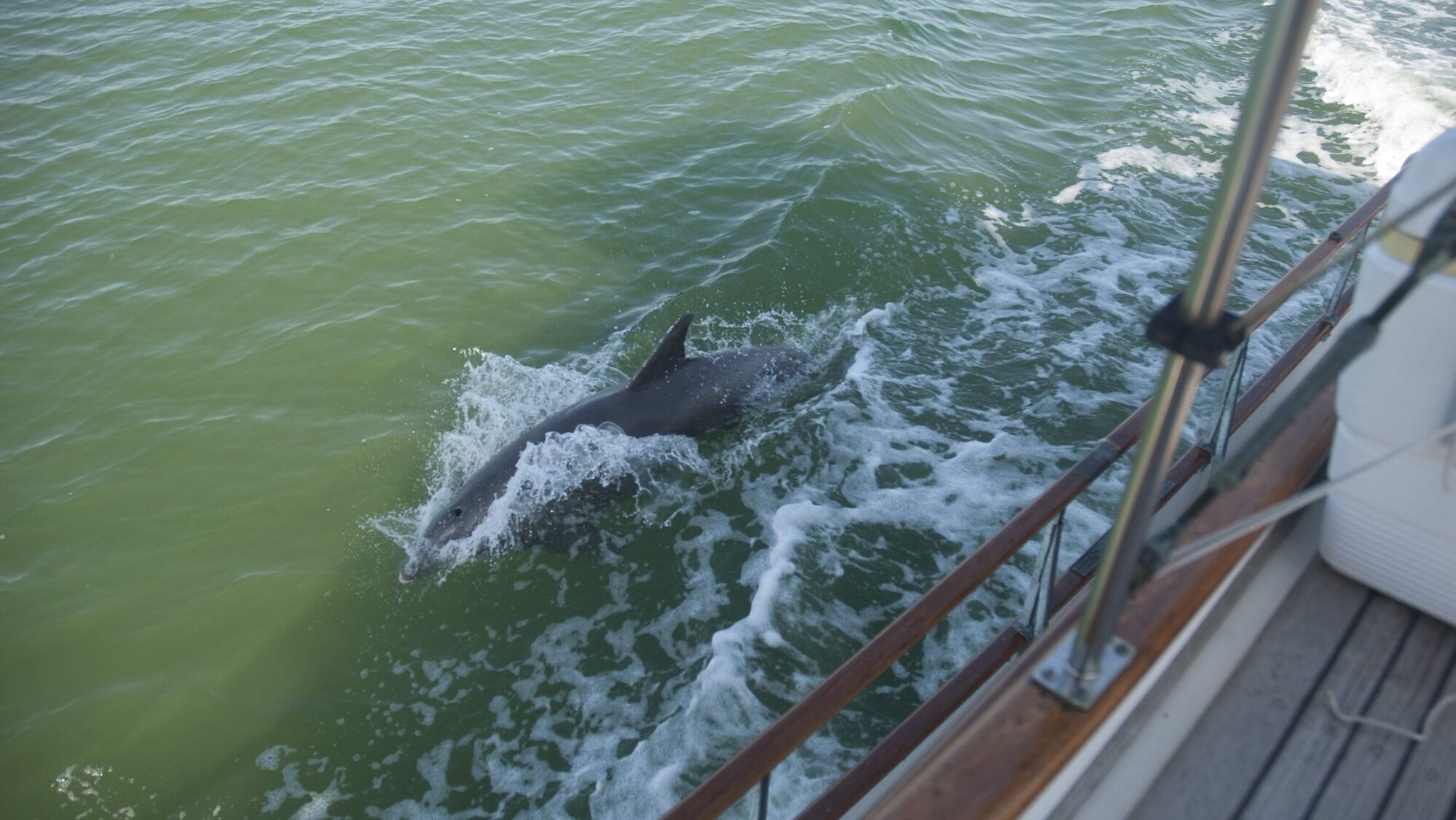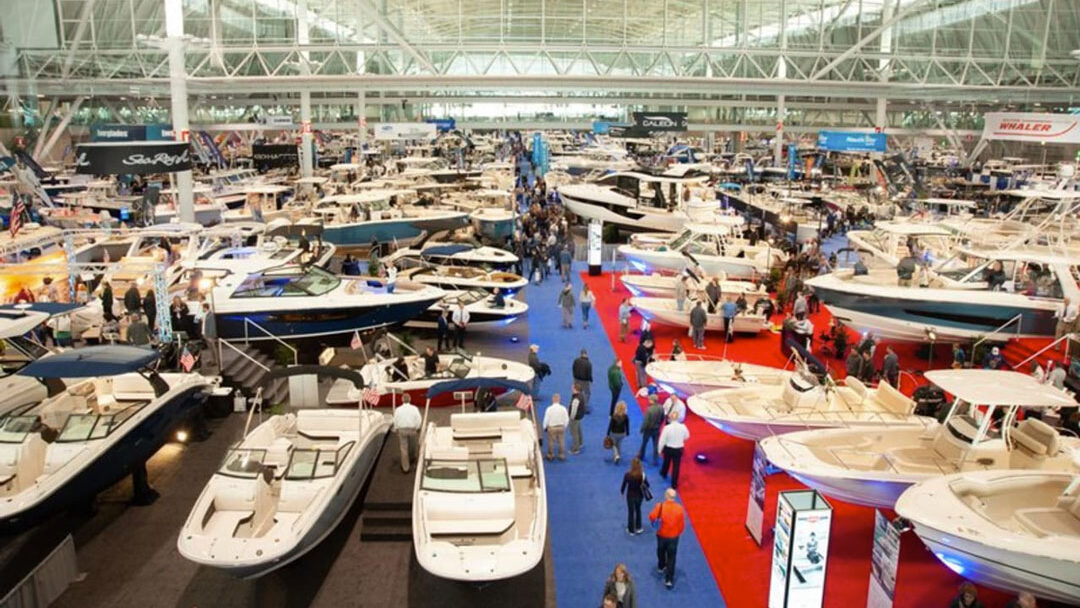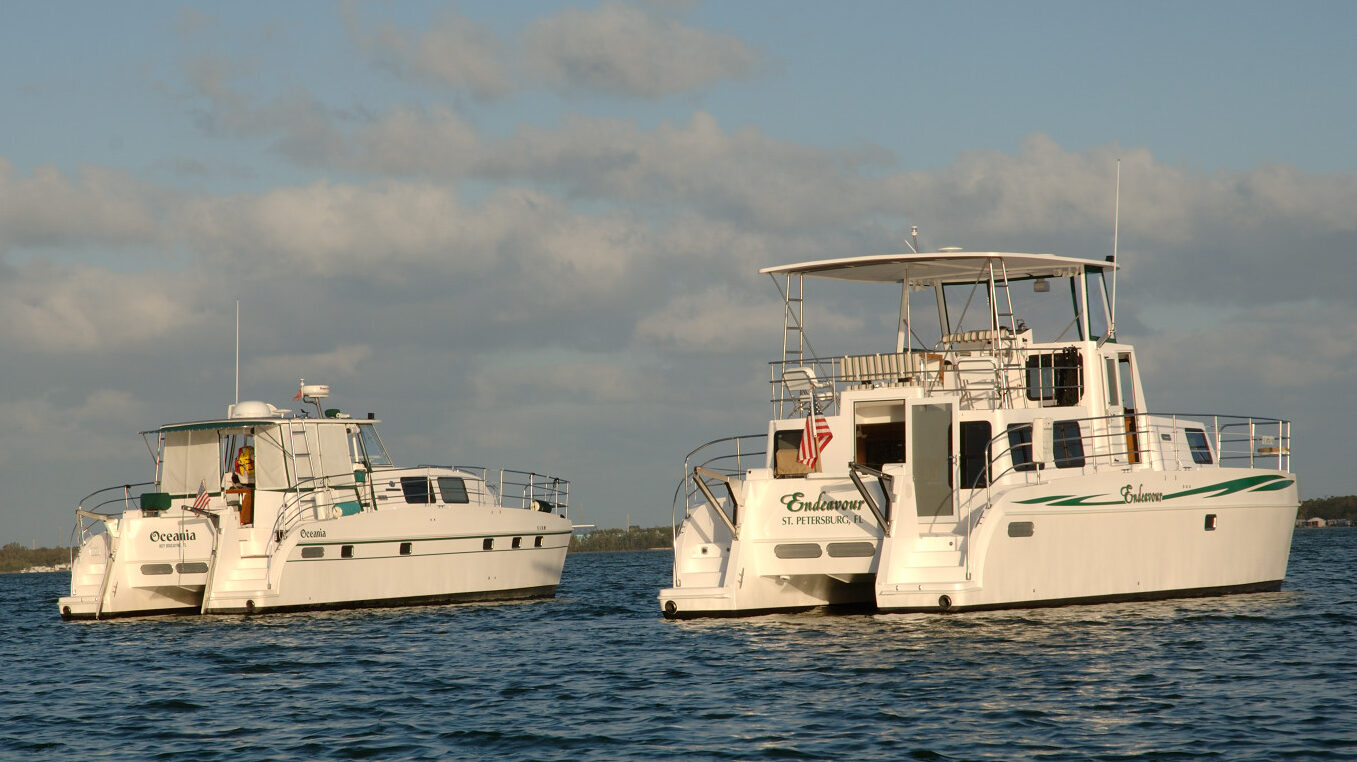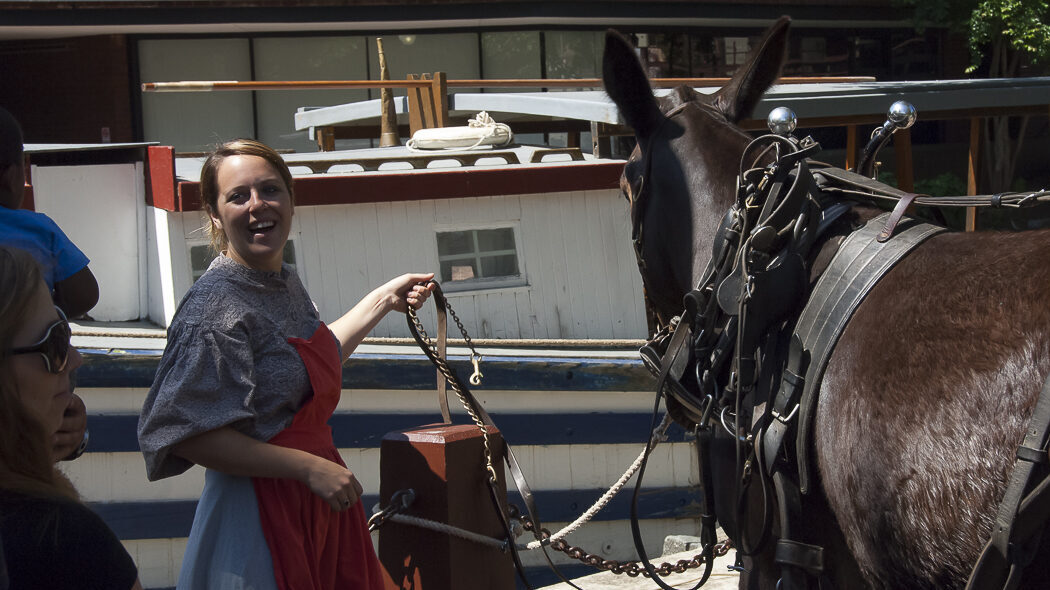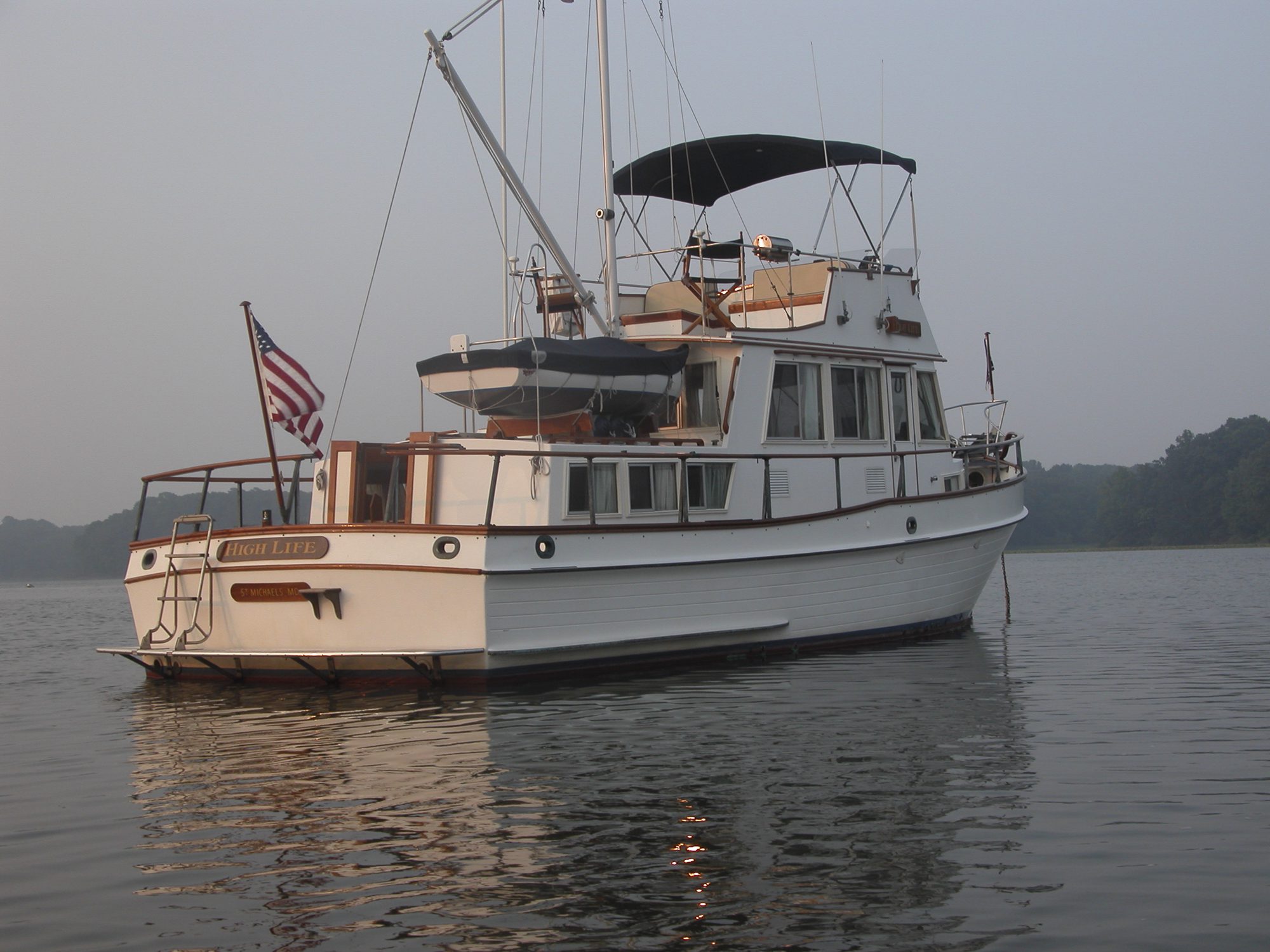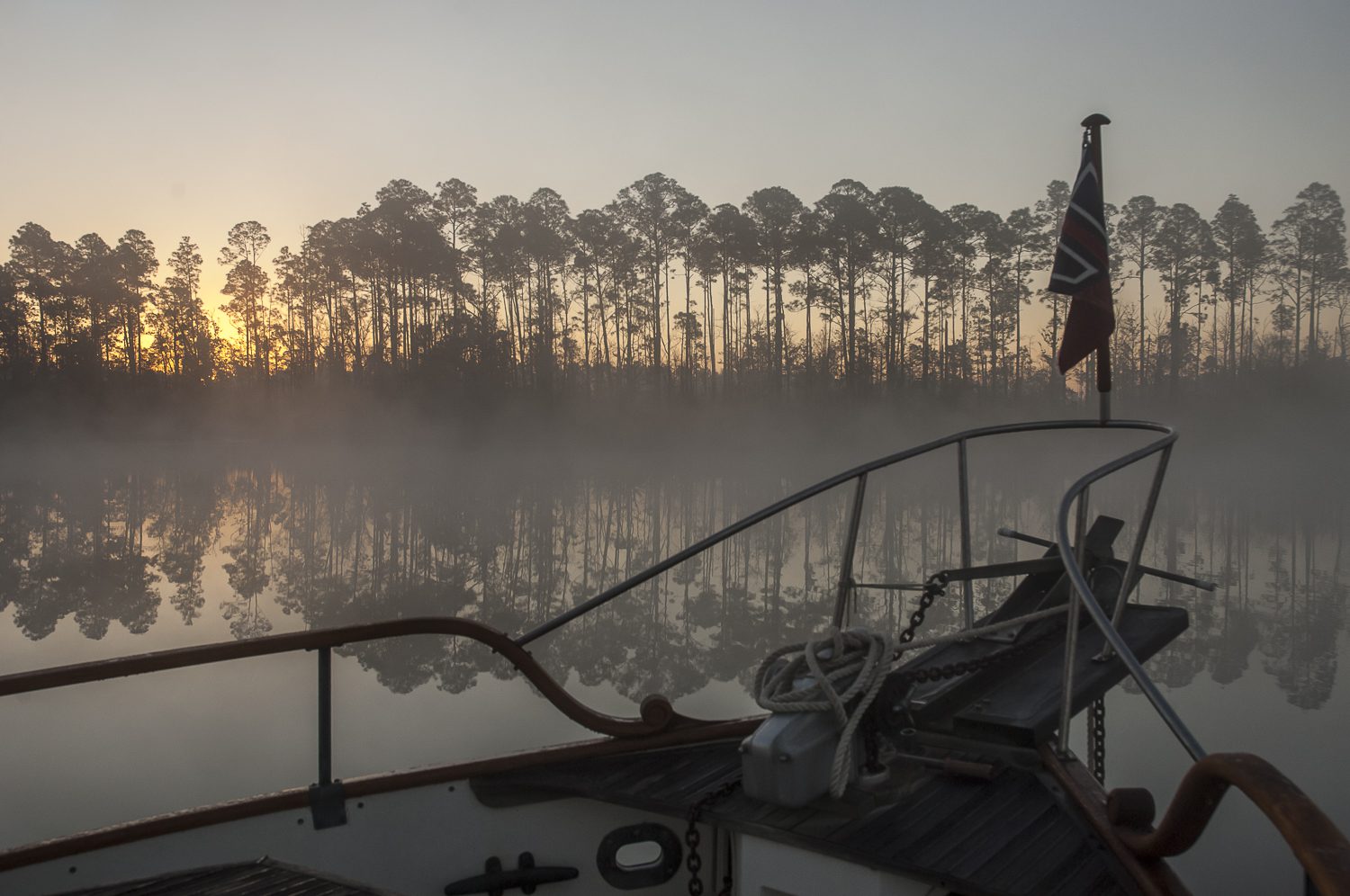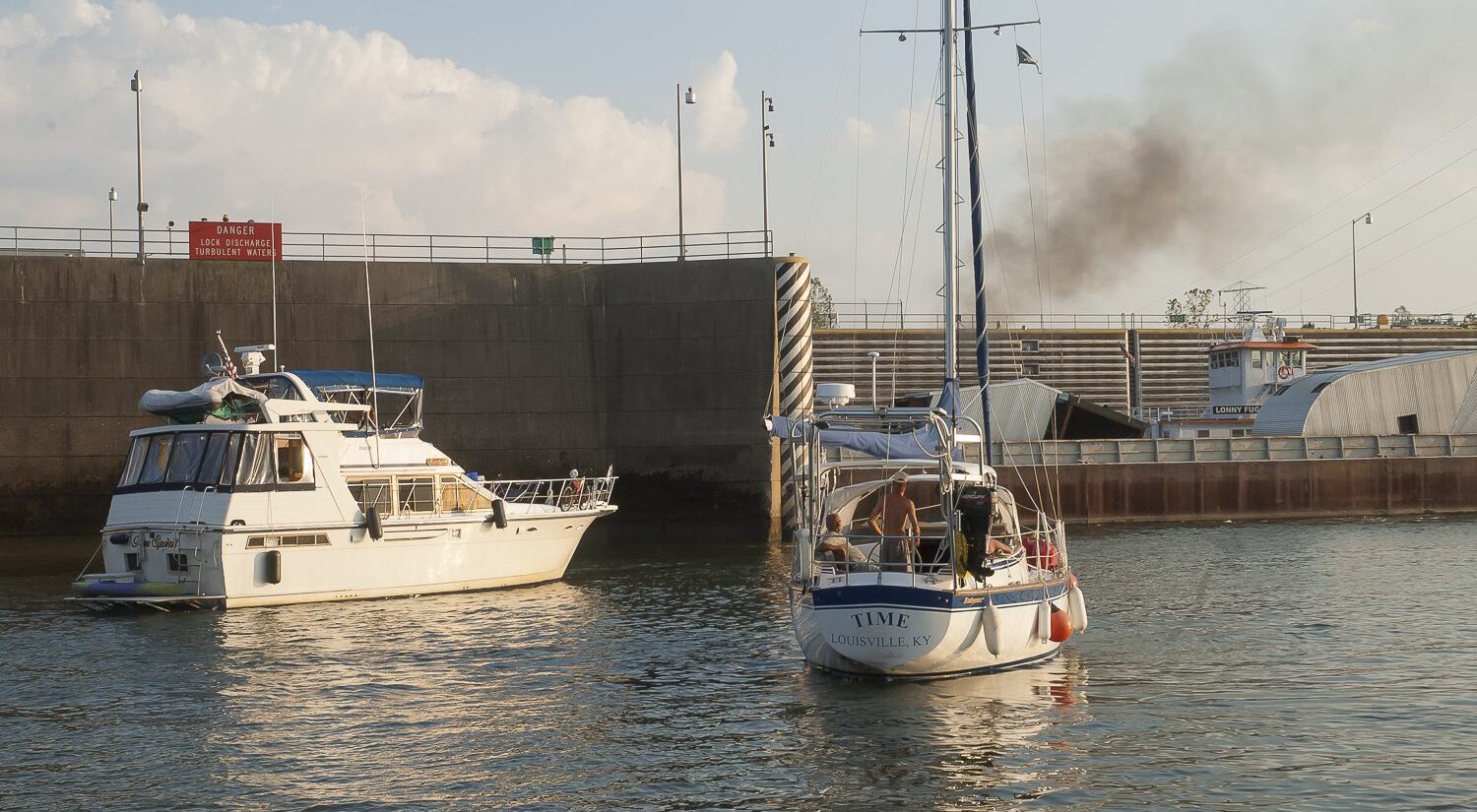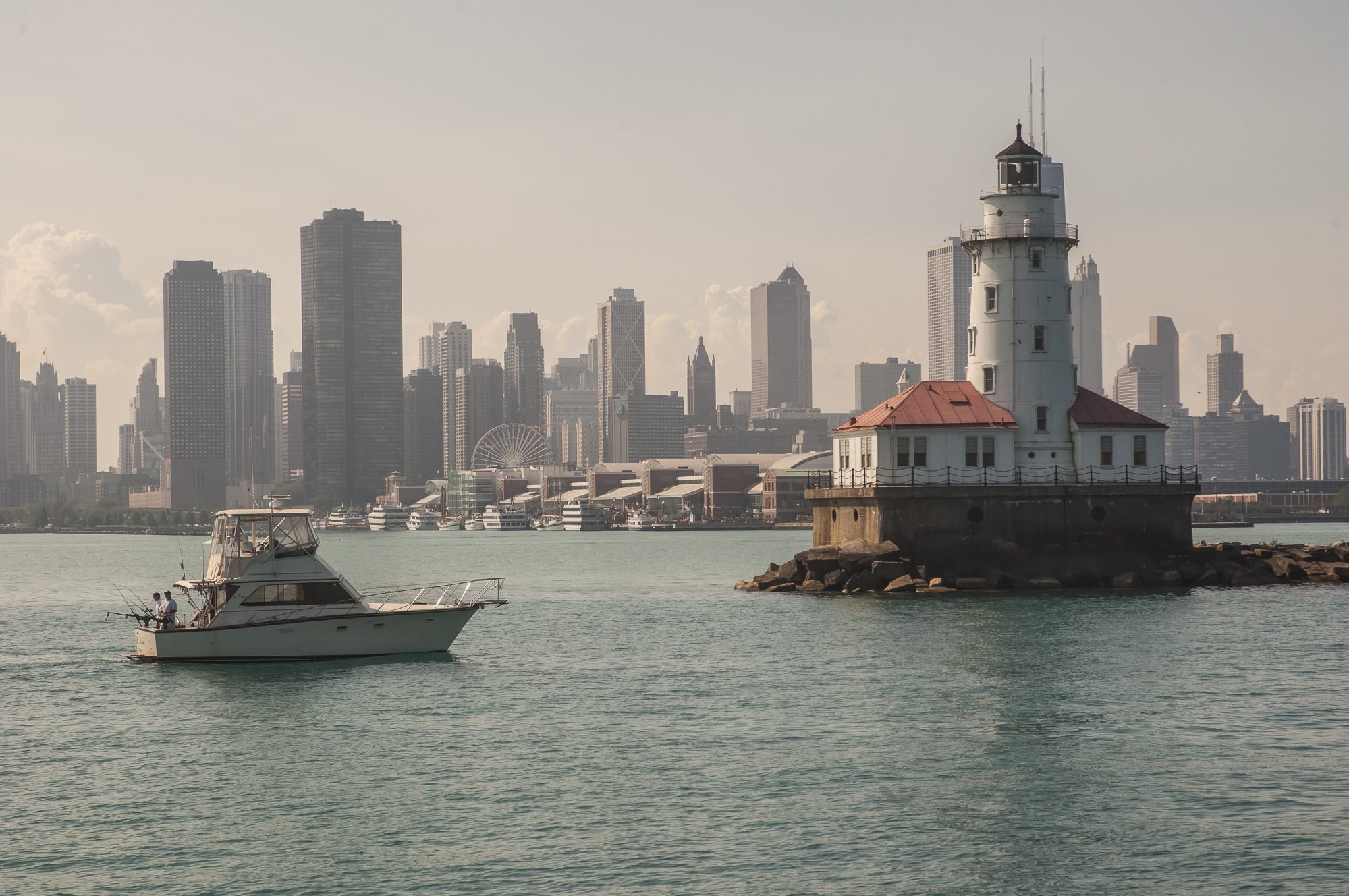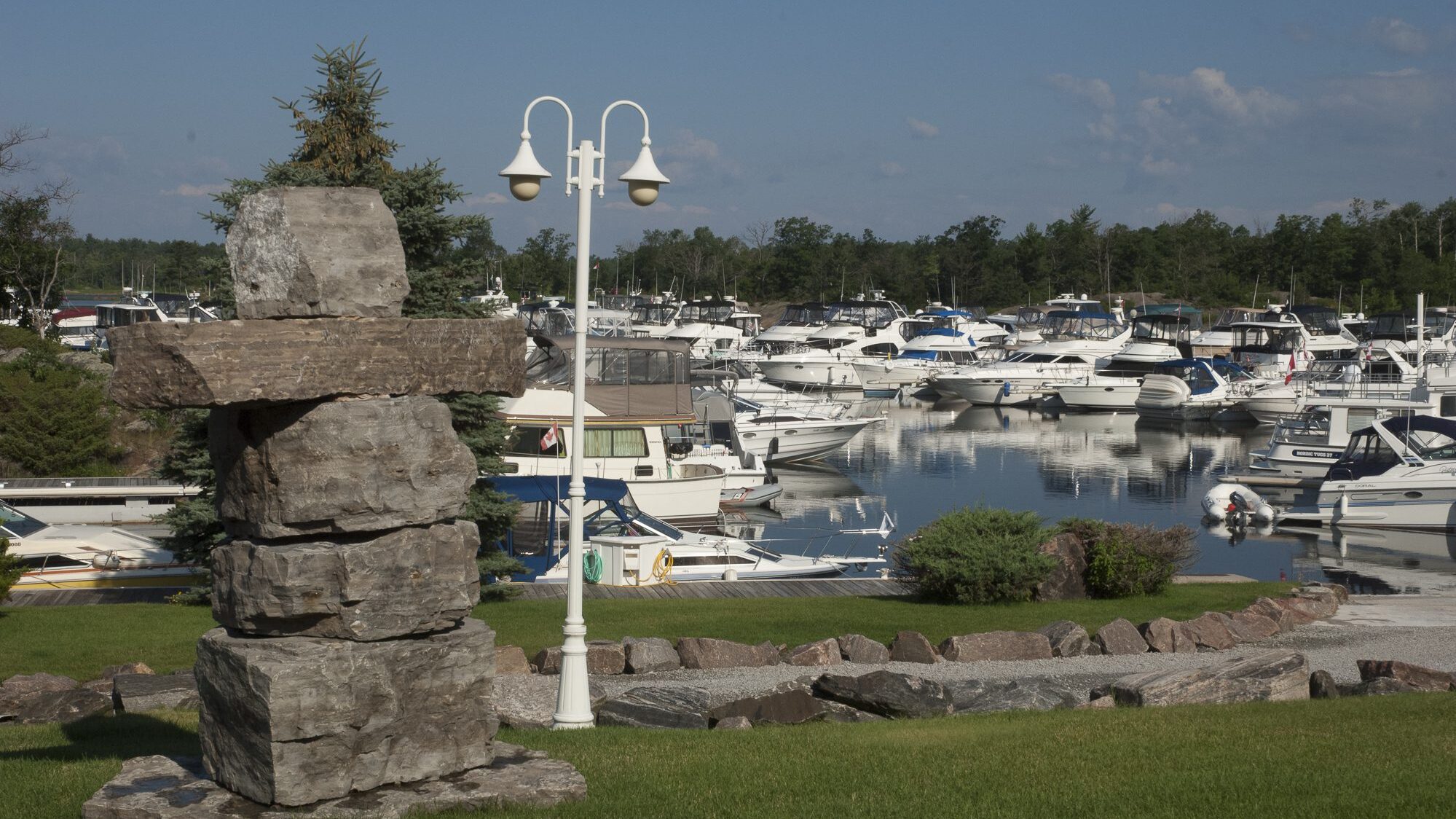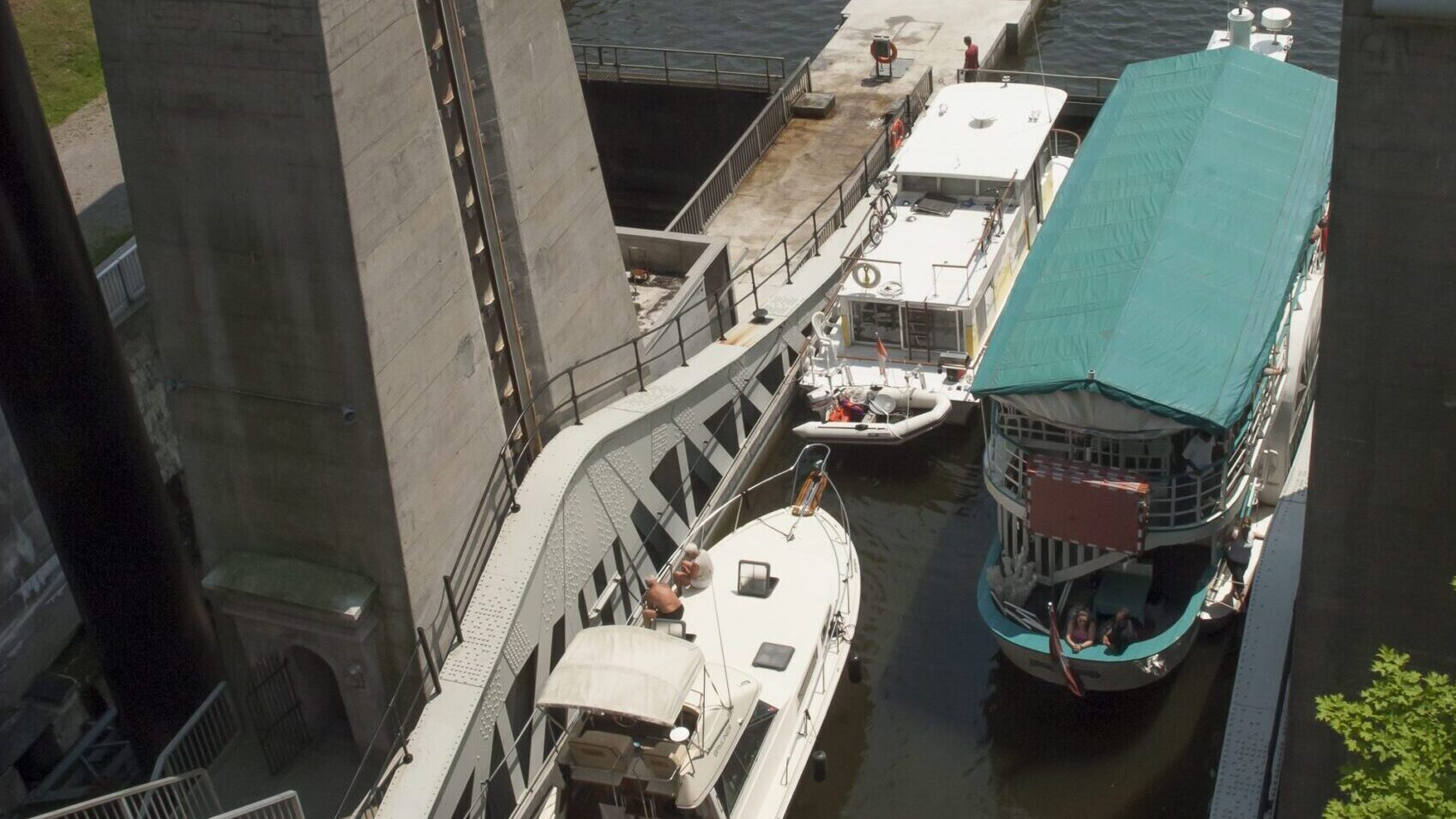Doing the Great Loop Cruise across Ontario
Before we departed upstate New York we enjoyed a few days in the lakefront town of Oswego. It was a welcome respite from long hours of locks and line handling in the Erie Canal. We enjoyed taking in the sights and getting the boat ready for Canadian waters. Parts of our cruise boating from Lake Ontario to the Trent Severn Waterway were eventful, some not in a good way.
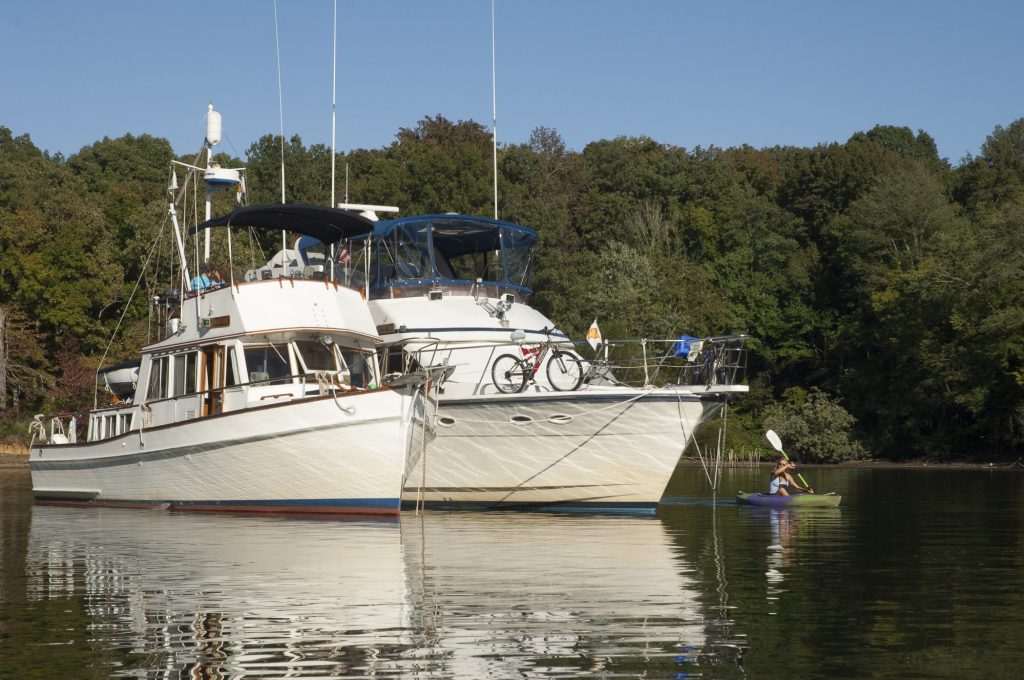
We met up with other power cruisers heading in the same direction—Inevitable Too, Irish Rose, Island Fever and SusieQ II. From their crews, we learned that clearing Canadian Customs in a small harbor like Collins Bay, just west of Kingston, would be less of a hassle than in a bigger port.
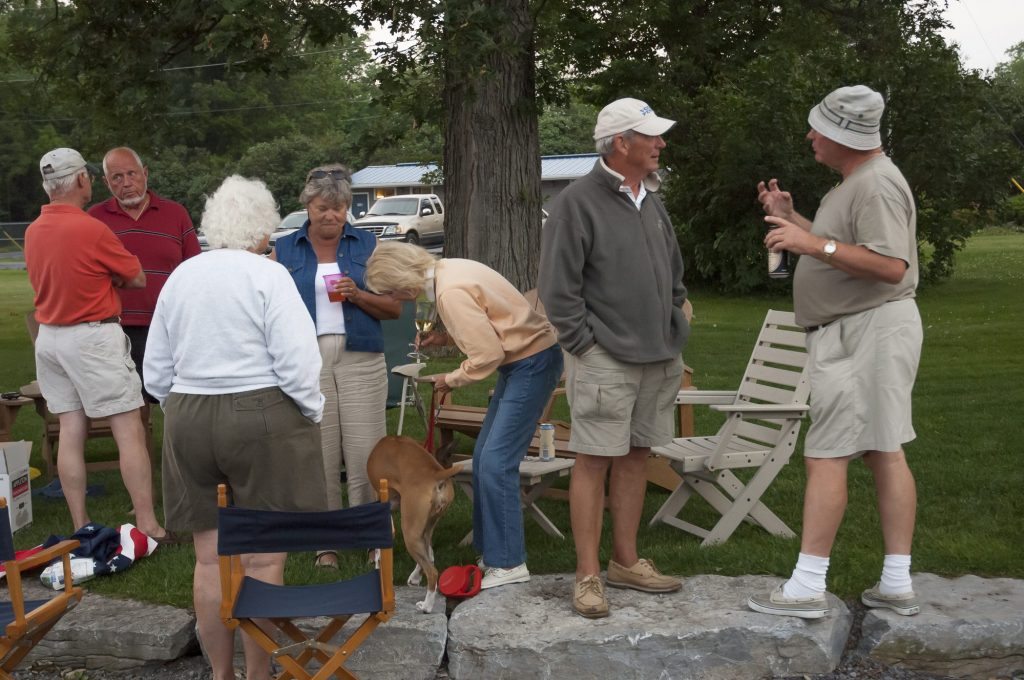
Refreshed, refueled, and reprovisioned, we left early under cloudy skies for a relatively easy crossing of the big lake. As we neared the Ontario shore, however, the prevailing southwest winds picked up and the seas began to build. We both had a startled look on our faces when we turned on the VHF’s WX channel and heard the forecast delivered in French; we were relieved when an English version followed.
Clearing Canadian Customs
Having slowed for the bad weather, we were the last of the Loopers to arrive at Collins Bay Marina, hoping that our call to Canadian Customs would result in an easy clearing. It did, sort of, but we should have paid more attention when declaring our liquor stores. Katie’s quick check missed several bottles that were not in the liquor locker, and it was embarrassing, to say the least, when the customs agents began pulling spirits from what seemed like every nook and cranny in the boat. The law allowed just two bottles with a little extra leeway for some beer, so we ended up paying $88 in duty for the undeclared liquor we brought into Canada.
Enjoying Canada Day
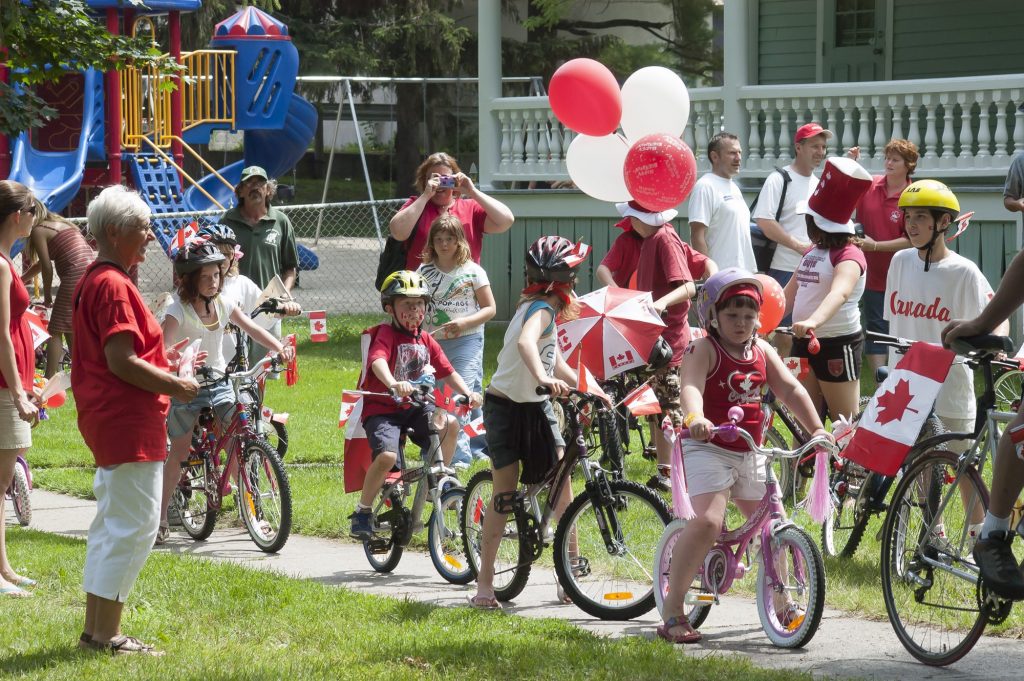
From there we made our way into the Bay of Quinte arriving at the lovely harbor town of Picton on July 1—Canada Day. When the city marina didn’t respond to our VHF call, the Prince Edward Yacht Club did and said we were welcome there. We paid $28 for the first night, and the second was free since we were members of a yacht club, a deal we couldn’t resist.
From the club, it was an easy walk through a quiet neighborhood to town, where we strolled streets busy with patriotic festivities. Everyone except us, it seemed, was wearing a red and white maple leaf T-shirt and hat. Nevertheless, we joined in and cheered for the local parade, then witnessed our first hot dog eating contest, where we were amazed to see different ways you can consume fourteen hot dogs and buns in a matter of minutes. (The winner ate the bread and meat separately; soaking the buns in water to make them mushy and easy to swallow.)
Across Ontario on the Trent Severn Waterway
When the locals went back to work, we pushed on to Trenton to begin the Trent Severn Waterway segment of our Loop cruise. The 240-mile waterway of connected rivers and lakes extends across Ontario to Port Severn on the shores of Georgian Bay. We kept our mast lowered into its crutch, since the maximum overhead bridge clearance was 22 feet.
Along the Trent-Severn, a series of 44 locks would lift our boat nearly 600 feet to Balsam Lake, then lower it 260 feet to the level of Georgian Bay. We had already experienced locks on the Erie Canal, but many in this system are still hand operated by lock tenders and youngsters called “red shirts,” who help in the summer. We especially looked forward to the hydraulic lift lock at Peterborough and Kirkfield, and to the Big Chute marine railway at Port Severn, all of which would be new experiences for us.
TIP Our firsthand experience using binoculars on a boat: Binoculars are vulnerable on a boat. An unexpected roll from a passing boat wake can send binocs onto a hard deck surface or worse, bouncing off the boat. To protect binoculars, stow them near the helm so they’re readily available but tucked in a safe cubby that prevents them from being damaged.
At Trenton, we pulled into the Fraser Park Marina, which is ideally located at the beginning of the Trent Severn waterway. It’s an easy walk for groceries, charts and just about anything else. At the first lock we paid a canal fee of about $150 for a one-way transit and were quickly on our way. That afternoon, we anchored in Percy Reach before Lock 8, but after a rocky night of thunderstorms, we decided that its open exposure wasn’t a good choice.
Entering the Trent Severn Waterway
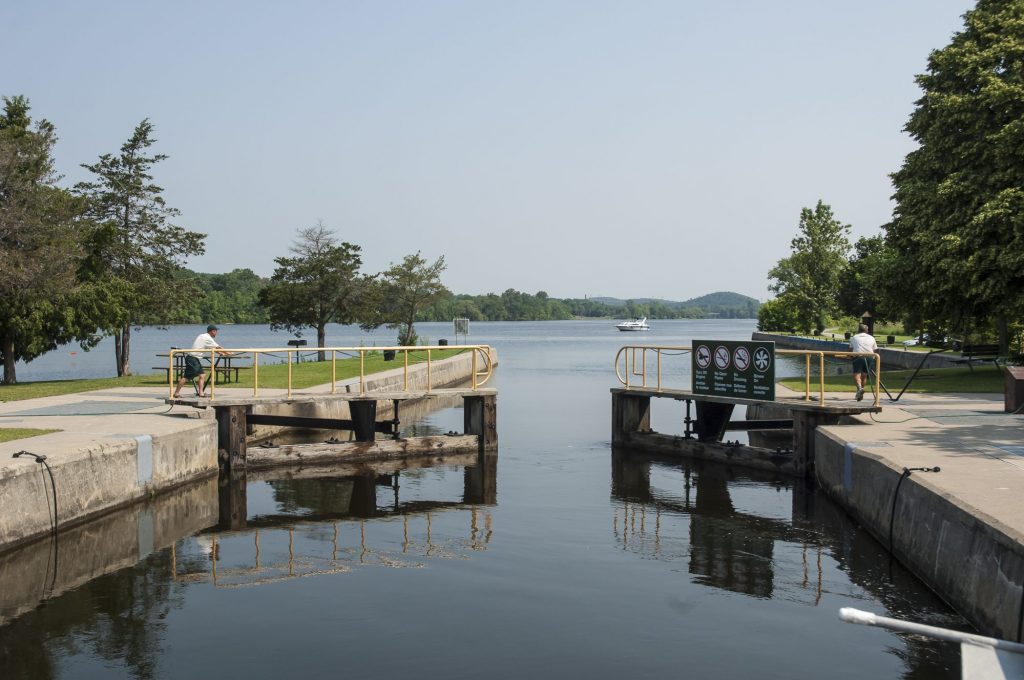
The next morning Gene spent a half-hour grunting and groaning as he used the boat hook to untangle the clumps of grass that had become entwined around the anchor line. The lockmaster explained, “The zebra mussels did such a good job of cleaning up the water that the grass grows in much deeper water than before. So, it can be a problem.”
The meandering waterway was never boring; sometimes the shore was lush with colorful wildflowers, while lily pads floated for a mile on the inland lakes. The terrain varied from rolling farmlands with golden wheat fields to pastures dotted with cows, all interspersed with clusters of shoreline cottages. Round white signs outlined in orange noted a ten-mph speed limit on the Trent Severn Waterway.
The days were hot, and save for a few stays in marinas, we often spent the night tied to a lock wall at a quiet canal park. There was no electrical hookup or water at these locations, so the hum of generators blended with the call of crickets and owls, and the occasional train whistle in the distance.

We met up with lots of cruisers on summer vacation—some local Canadians, some from the United States. Several couples, like us, were doing the Loop. From the crew of Irish Rose, we learned about the strawberry pie at Dooher’s Bakery, a favorite stop for cruisers in Campbellford. The town is also home to the designer of the Canadian two-dollar coin or “toonie,” a distinction that is celebrated with an impressive twenty-seven-foot-high coin that’s displayed in the park.
We liked using “toonies” (Canadian $2) and “loonies” (Canadian $1), the Canadians’ coins which seemed like a much better idea than our paper bills. The exchange rate was small, so dealing with the conversion between Canadian and U.S. money wasn’t an issue. We soon found that ATM machines worked just as well in Canada as back home.
Accidents happen -Teak rail gate overboard in lock
We were making our way nicely through the waterway until we entered Lock 13 and lost the teak railing from the gate on the port side of our boat. As Gene was leaning against it to position a stern line, the gate popped open. He almost went overboard but managed to regain his footing. Unfortunately, the gate’s hinge pin broke, and the foot-long railing gate flipped into the water. Before we knew what had happened the piece of varnished teak with its heavy bronze hardware had sunk like a rock.
When we got to the top of the lock, Katie asked the keeper if the chamber would be drained during the winter, hoping that our gate might be found. He said no but added that periodically divers were sent down to clear out the debris, and he promised they’d keep a lookout for it. That didn’t sound promising, but we gave him our phone number anyway.
The Hastings Incident collision of our own making
We had a serious problem at the new Village Marina in Hastings, which sits on the Trent River just above the lock. We were one of the first boats to arrive, and the harbormaster assigned us to the third slip from the shore side of the pier. As we maneuvered toward it, a strong current was running, but we managed to dock without mishap. Later, the marina filled up with larger boats, many of which backed in, their bows extending outward.
As we backed out of our slip the next morning, the harbormaster called out to warn us of the rocks behind us along the shoreline. Because of their presence, we couldn’t back down far enough to make the turn before the current brought us down on the fleet. It all happened so fast. With twin screws and a bow thruster, the maneuver would not have been difficult, but our Grand Banks 35 High Life had a single engine and no thruster.
The worst thing that could have happened did happen. We ended up impaled on the bowsprit of Dream Catcher V, a Grand Banks 42 owned by a Canadian couple, Roy and Stephanie. The sound of the collision brought everyone out on deck. High Life was sideways and stuck on the bow of the larger boat. Only a major, coordinated effort among a lot of people succeeded in extricating us. First, the marina operator called the lock and asked them to close the dam to lower the current. Next, two other Loopers jumped into an inflatable, and a pontoon boat (which just happened to be passing by) tied lines together and to us, and –as the current slowed—managed to free us from the clutches of Dream Catcher V.
Our hindsight is perfectly clear about what we should or shouldn’t have done. As soon as we noticed the strong current when we arrived, we should have asked for another slip because the tight location and strong current made maneuvering our single-screw boat difficult. Or, once we were in the slip, we should have known that we couldn’t get by the other boats, and we should have waited until our neighbors had departed. Clearly the accident was a case of operator error.
We exchanged insurance information with Dream Catcher V owners, who couldn’t have been more gracious despite the damage to their bowsprit. We were relieved to see that our own vessel had suffered minimal harm. While their plow anchor had struck High Life, it had only cut into the wood trim around one of the deckhouse windows. The impact could have left a huge gouge in the fiberglass and broken windows to boot, but the damage to our beloved trawler was cosmetic not structural. We were lucky. Our injured egos will take time to heal, and we will forever refer to the event as the Hasting Incident.
After we got underway, our fortunes turned while we were en route to Peterborough. Our cell phone rang (which it rarely did in Canada, even with an upgraded package), and we were flabbergasted to hear a diver tell us that he found our teak gate at the bottom of Lock 13. We said we’d rent a car and come get it, but he insisted that he’d be in Peterborough the next day and would deliver it—which he did!
This leg of our Loop Cruise was a good lesson in humility. The accidents were of our own making and were not forgotten.
- Boating on Lake Michigan
- Great Loop Cruise Primer
- Boating the Panhandle and Gulf Coast from Mobile AL to Fort Myers FL
- Legs of the Great Loop Cruise
Gene and Katie Hamilton are veteran sail and power boaters and award winning boating writers. They are authors of Coastal Cruising Under Power and Practical Boating Skills. They are members of the Outdoor Writers Association of America.
Post Views: 4,656
|

